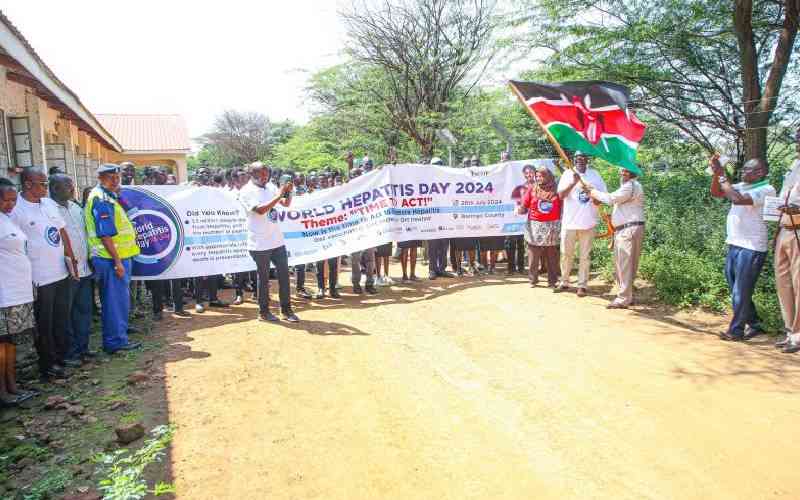
The WRTI wetland research centre in Naivasha which has been closed following the rising water level of Lake Naivasha, on Novermber 9, 2025. [Antony Gitonga, Standard]
The rising water levels in Lake Naivasha have marooned houses, farms, and major government infrastructure.
The multi-million-shilling Wildlife Research and Training Institute (WRTI) wetland research centre and the nearby hippo camps have been marooned by water, paralysing operations.
The WRTI has incurred losses running into millions of shillings as staff moved in to salvage vital research equipment and materials.
The rising water levels in Lake Naivasha have also displaced wild animals—including zebras, giraffes, and antelopes—raising fears of human-wildlife conflict in nearby estates.
WRTI Director Patrick Omondi termed the flooding a major threat to research in the country, as the process of producing fingerlings in the Naivasha centre had kicked off before the environmental crisis struck.
“At the moment, no one has an idea what is causing the rise in water levels, and we are working with our colleagues, including geologists, to understand this rare phenomenon,” he said.
- Habitat loss, change in land use hurt wildlife conservation
- Global experts to convene in Naivasha for wildlife scientific conference
Keep Reading
The Institute Principal Research Scientist, Vincent Oband, said that the flooding had been reported in various lakes in the Rift Valley.
Dr Oband called for joint research among scientists to establish the real cause of the flooding while ruling out rainfall in the catchment, as reported in some quarters.
“Lake Naivasha levels have been rising at 90 metres every month, but in the last month this had changed, flooding the research centre, nearby estates and farms,” he said.
WRTI Deputy Director of Research, David Nderee, said that they had embarked on the translocation of wildlife displaced by the lake.
He revealed that in conjunction with KWS, they had identified the most affected areas and animals.
“It’s not only human beings who have been affected by the rising waters but also wild animals, and we have started the process of translocation of those affected,” he said.
 The Standard Group Plc is a multi-media organization with investments in media
platforms spanning newspaper print
operations, television, radio broadcasting, digital and online services. The
Standard Group is recognized as a
leading multi-media house in Kenya with a key influence in matters of national
and international interest.
The Standard Group Plc is a multi-media organization with investments in media
platforms spanning newspaper print
operations, television, radio broadcasting, digital and online services. The
Standard Group is recognized as a
leading multi-media house in Kenya with a key influence in matters of national
and international interest.











